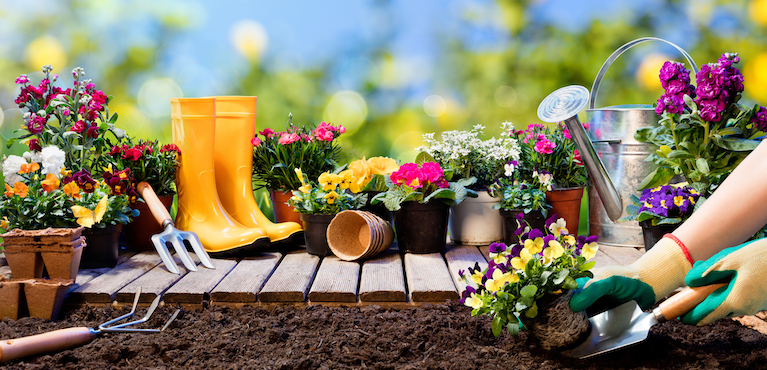
Get your garden ‘spring ready’ with Loans 2 Go
Sort your garden out with online loans from Loans 2 Go….
Spring is here and it’s time to start getting out and about and enjoy being in the fresh air. But for those of us with gardens, all is not a bed of roses!
Most people do not do very much – if anything at all – with their gardens over winter. So it gets to this time of year and we hardly dare look out of the window.
But don’t despair. If you get organised then you can get your garden back into good shape pretty quickly. Here is our five point plan for rescuing your garden this spring:
The first thing to do is clear your garden of everything you don’t need. Depending on the size of your garden you could probably get this done over a weekend. If you either have a large garden or a lot of clearing to do then why not hold a garden clearing party? Get friends and family to come and join in, and finish off with the first BBQ of the new season.
Use this opportunity to give your garden a really good tidy up. Cut the grass if it is dry enough to do so. Cut back overgrown plants and shrubs and get rid of old leaves and debris. Take all the rubbish to the local tip straight away so that it doesn’t just sit there festering.
It’s also worth checking your garden tools to see if any need repairing, sharpening or replacing. Taking the time to do this now could save you hours of frustration later when your tools let you down part way through a messy job.
Also clean any garden outbuildings and garden furniture, and check fences and other garden structures for winter damage.
Now you’ve cleared the decks, have a think about what you would like to do with your garden this year. Some of this will depend on what your other plans are. For example, if you are thinking of moving home in the next year or two then the best thing is to keep your garden very simple, so that it looks neat during the selling process and the new buyers will be able to come in and make their own mark on it.
But if you expect to stay where you are then why not draw up a plan of how you would like your garden to develop over the next year or two? There are lots of garden design apps that can help you do this or you may prefer to draw your plan on paper. But either way, consider what is already in your garden that you want to keep, what you want to get rid of, and what new things you want to add.
To achieve the very best results from any new planting it is important to prepare the ground well before you plant. Start by breaking up the soil, raking it and aerating it. This will make it much easier when you start planting.
It is also a good idea to use compost to add nutrients to the soil so that your new plants are provided with the best environment in which to grow to their full potential.
If you do decide to add more plants, then make sure that you position them in the right kind of soil and light that they need, and also check the best time of year to plant them. Spring is a good time to plant perennials such as lupins, delphiniums, foxgloves and peonies and also summer-flowering bulbs, for example dahlias, cannas and lilies.
For best results, some plants may need to be started off either indoors or in pots. Some outdoor plants can be purchased partially grown and ready to put straight into the garden, others can be planted outdoors straight from seed.
The easiest way to plant seeds is to make a furrow on the surface of the flowerbed into which you can add water then scatter the seeds thinly before covering with soil.
For any type of planting you may want to cover them with netting or plastic sheeting in the early days and weeks to provide protection against unpredictable weather or garden wildlife.
It is a good idea to label what you have planted and where, so that you don’t overplant in that area and also so that you remember to look after what you have planted.
Your garden should now be ready to bloom and grow, but the essential thing is now to maintain it regularly. Getting into a routine of grass cutting, weeding, trimming and watering is well worth it. Tackling things in small blocks of time on a regular basis is much better than letting everything slide then having to spend another whole weekend rescuing it all again.
Also remember to check fences and other structures regularly and repair any damage as soon as you spot it, rather than leaving things to get worse.
We hope that the above tips help you to get your garden ready for spring and then give you time to enjoy it. If you need to top up your finances to get your garden back into shape then Loans2Go may be able to help. We offer a range of online loans that you could use for this purpose, so why not have a look at how we could help.
Check back here soon for more financial and lifestyle tips from Loans 2 Go!


 Now is the time to start planning your financial goals for 2026
Now is the time to start planning your financial goals for 2026 
















